An Quang Buddhist Temple
Description
The An Quang Pagoda, also known as the An Quang Ancestral Temple, is crucial to the evolution of Vietnamese Buddhism. The pagoda has experienced the ups and downs of Vietnam’s Buddhist evolution. Formerly the seat of the Unified Buddhist Church of Vietnam, it is now the seat of the Ho Chi Minh City Buddhist Sangha. The pagoda is also the location of the Institute for Dharma Propagation.
An Quang Pagoda is one of the most prominent pagodas in Ho Chi Minh City due to its 70-year contribution to the development of Vietnamese and Ho Chi Minh City Buddhism. It has served as the city’s center for Buddhist organizations and the Buddhist Institute. In addition, it is worthwhile to visit a religious site with exquisite architecture and interiors constructed by renowned Vietnamese painters. It is the ideal area to escape the bustling city of Saigon.
Architecture
The monk Thich Thien Hoa commissioned the genius Nguyen Huu Thien to design the structure. The design was influenced by the Tu Dam Pagoda in Hue, as well as by Vietnamese, Indian, Chinese, and Japanese architectures.
Buddhist monk Truong Van Thanh as an artist Professor at Gia Dinh Arts Practice School (formerly Ho Chi Minh City University of Fine Arts) Truong Dinh Y was responsible for the pagoda’s interior design, decorating, and carved artwork.
On the garden’s left-hand corner is the tower, Lecture Hall. The Cultural Store, Reception Room, and Guanyin Stupa are located on the right. The Ancestral House is located behind the Main Building, which has the Buddha Hall on the first floor. The quarters of the monks are to the left of the Ancestral House.
Both of An Quang Pagoda’s entrances are located on Su Van Hanh Street. The square gate pillars made of stone tiles have a height of 5 meters, a width of 1.15 meters, and a length of 1.62 meters. Two pillars of each gate are unequal, with yellow dharma wheels, a miniature brown Bodhi tower, and four green lions gazing in different directions on the larger pillar.
Facing the main gate, the two-story, three-arched main building is adorned with red and green dragon, cloud, and lotus petal ornamentation. The green-tiled roofs are curled upward and adorned with red dragon ornaments at the eaves, a red dharma wheel ornament at the peak of the upper roof, and a Swastika ornament at the peak of the lower roof. At the rear of the roof is a small traditional Buddhist monk’s helmet made of concrete.
From 1965 to 1980, the bottom floor served as the headquarters of the Unified Buddhist Church of Vietnam. Since 1981, it has served as the headquarters of Ho Chi Minh City Buddhist Sangha City. The pagoda also serves as a place of reconciliation between the Vietnamese government, Communist Party, and Unified Buddhist Church.
In the back of the ground floor are a wooden statue of Maitreya Buddha, two lion statues in front of a panel of carved wood with golden characters, and a pair of panels of carved wood with parallel sentences.
In the vast Main Hall, a concrete figure of Gautama Buddha in meditation created by Buddhist Minh Dung and a stupa containing Buddha’s relics are revered. The walls are adorned with reliefs depicting the life of Buddha. Two sculptures of Dharmapala, a wooden statue of Bodhidharma, and lacquer paintings of Guanyin, Bodhisattva Manjushri, and Bodhisattva Samantabhadra were produced by the Vietnamese artist Truong Van Thanh.
Behind the main structure lies the Ancestral House, where ancestors are worshipped. Altars, panels, and doors are built of wood to provide warmth and coziness to the home.
The stupa was constructed in 2009 to honor the wisdom of Gautama Buddha, Ksitigarbha, Guanyin, and the Buddha’s relics. The stupa cost 4 billion VND to build. The square stupa has seven floors and a smaller, round stupa with seven stories on top. The stupa is primarily green and brown in color. Similar to the roofs of several pagodas, temples, and stupas in Vietnam, the roofs of the stupa at An Quang Pagoda are curved upwards and adorned with cloud embellishments at the eaves.
The Thien Hoa Lecture Hall has two stories, five-colored windows, iron and glass doors, and lotus embellishments made of wrought iron. There is a dharma wheel on the building’s exterior and a Swastika on its roof.
History
Buddhist monk Thich Thien Tri from Da Nang’s Linh Ung Pagoda constructed a modest pagoda with a dried leaf roof and an area of 500 square meters in 1948. Ung Quang Tu was a Buddhist school where the founder educated young monks.
Buddhist monk Thich Thien Hoa returned to Vietnam in 1950 after studying overseas and was entrusted with organizing and managing Ung Quang Pagoda. He based the design of the Main Hall’s building on Hue’s Tu Dam Pagoda.
Buddha monk Thich Tri Huu invited Lien Hai, Mai Son, Sung Duc, and Ung Quang to join Nam Viet Buddhist School in 1950. Nam Viet Buddhist School made An Quang Pagoda its headquarters after renaming Ung Quang Pagoda. On July 14 and 15, 1953, the An Quang Pagoda was solemnly inaugurated.
In 1955, the Ancestral House and dining room were constructed. In 1956 and 1957, the pagoda constructed the Golden Lotus Printing House, Bodhi Incense Factory, Library, Publishing House, and Huong Dao Issuing House. The Lecture Hall was renovated and reconstructed in 1959, the Main Hall in 1966, and the dining room and monks’ apartments in 1967.
Ancestral House, Dining Room, and monks’ rooms were reconstructed in 2006. The tower to the left of the main gate in 2009 The Reception Room was constructed in 2011.
Working Hours
- Monday Open all day
- Tuesday Open all day
- Wednesday Open all day
- Thursday Open all day
- Friday Open all day
- Saturday Open all day
- Sunday Open all day

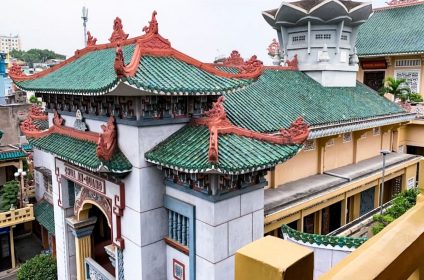
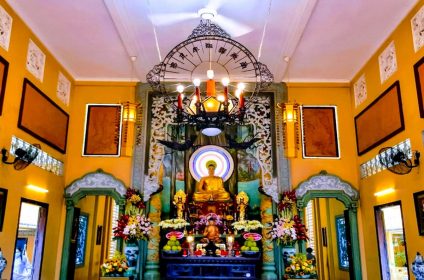
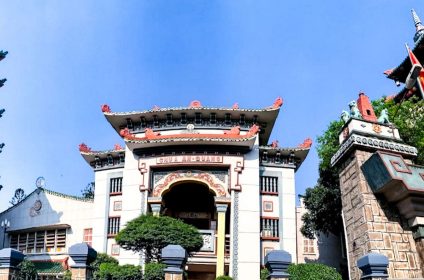
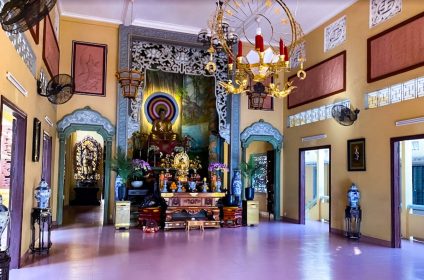
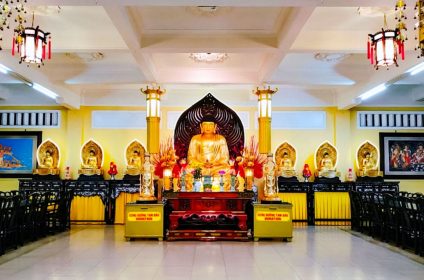
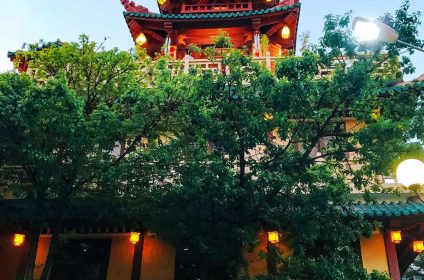
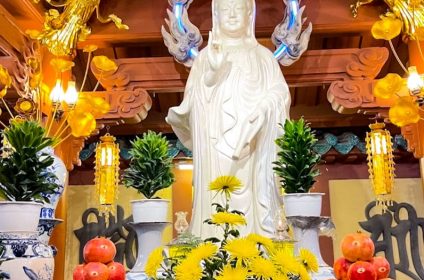
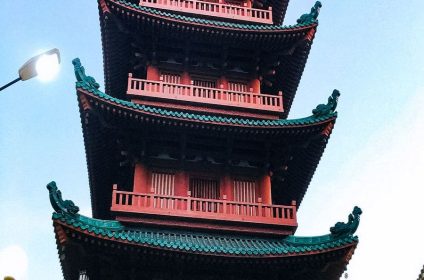
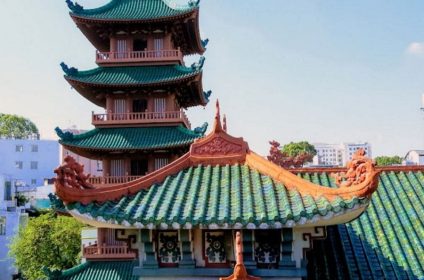
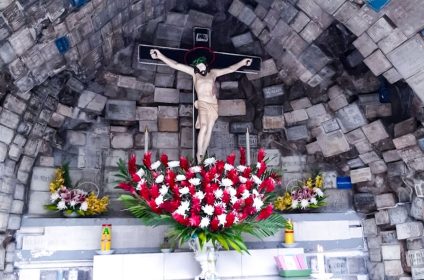
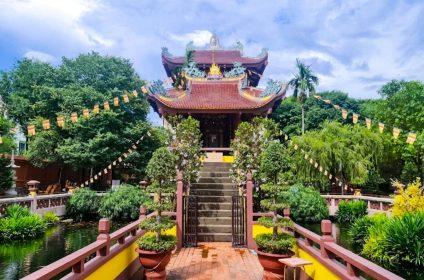
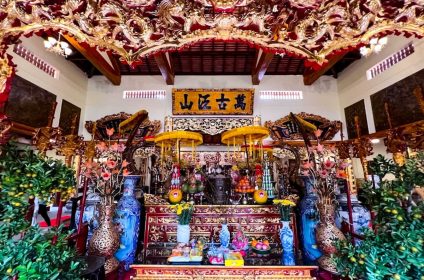
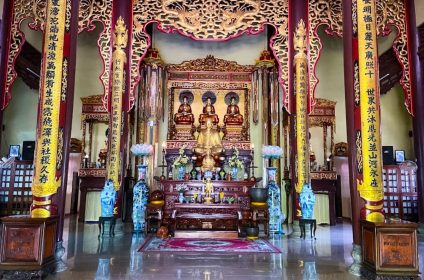
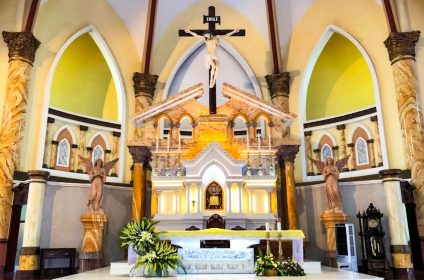










Add Review